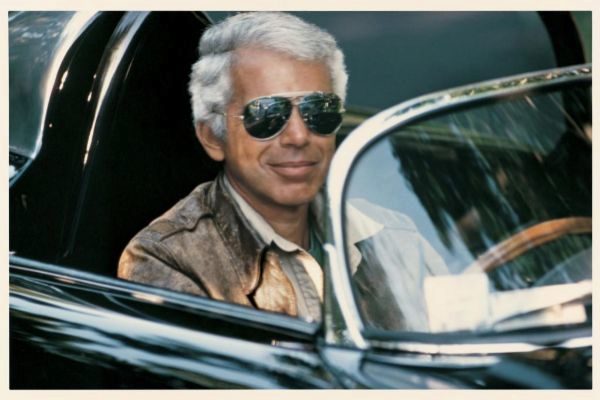What do Woody Allen, Kanye West, Audrey Hepburn and Karl Lagerfeld have in common? They are all big fans of Ralph Lauren and appear in Very Ralph , the documentary about the American designer that HBOEspaña has just premiered and produced and directed by Susan Lacy. The film reviews the brilliant path to the success of Lauren, the son of Jewish immigrants from Eastern Europe who grew up in a humble home in the Bronx , a few blocks away, by the way, where Calvin Klein did. Actually, Lauren was named Lifshitz and his father was dedicated to painting murals in synagogues, but as a child he was clear that he wanted to be Eddie Fisher or Paul Newman when he grew up, that is: 100% American and, if possible, rich.
That obsessive quest for the intrinsically American and preppy has made Ralph Lauren a multimillionaire businessman, owner of a fashion empire that turned half a century last year, is publicly traded and sells absolutely everything: clothes, furniture, sheets, stuffed animals, tableware, candles and riding boots. Very Ralph explains how Lauren started making ties a tad wider than those found at Bloomingdale's in the 1960s , when men's fashion went through a small boom , riding between Saville Row and the New York Madmen . He dusted off the look of the 30s and his participation in the costumes of the movie The Great Gatsby, starring Robert Redford and Mia Farrow, put him in the disparadero.
From there he dedicated himself to exploring the American imaginary in conscience, all its myths, one by one: the cowboy, the Ivy League universities, the escapist satin look , feather boa and post-depression martinis, the working class look of jeans and white t-shirt ... a comfortable world, so idealized and cinematic under Lauren's prism that ended up enclosing an utopia in itself. "In another era he would have been one of the great film producers," says Donna Karan. For some, the designer opted for a democratization of the American style that appealed to the general public. For others, he cemented his empire over paradise (or condemnation, as one looks at) from the eternally aspirational.
The best of the documentary are the domestic videos in which Lauren, a big shy man in the background, lets go and dances with a white American girl imitating Frank Sinatra and playing with a Fred Astaire cane. For Tina Brown, the mythical director of Vanity Fair , she always had the soul of Cary Grant. Ricky, his wife since they were married in the Bronx when she had just turned 19, is presented as the founding myth of the brand for its casual and slightly tomboy style , with a washed face and blonde hair in the wind. The documentary omits rumors about infidelities that have surrounded the designer for decades.
Very Ralph is the closest thing to an authorized biography filmed. That explains the excessively friendly tone in some of its parts, as when addressing the low racial diversity of the brand's universe, overwhelmingly wasp . The designer hired the African-American model Tyson Beckford in 1993, throwing his career to stardom and making him for years the image of Polo. Beckford and Naomi Campbell appear on the tape with Kayne West, who confesses that Lauren made him "dream of the beaches of Montauk from the south of Chicago."
There is talk of the fury that was cultivated by Polo in the 90s in parallel to the outbreak of hip hop, when it became fashionable to go to Manhattan, steal in its stores and return to the neighborhood showing off the loot. But, as New York Times journalist Vanessa Friedman points out, Ralph Lauren's is a closed and sparsely porous universe that, by its very nature, does not tend to change and takes itself so seriously that it does not admit possible irony . And that leaves out many Americans, more and more, who will never fit into that narrative.
According to the criteria of The Trust Project
Know more- culture
- fashion
Photography Norman Parkinson, the photographer who reinvented fashion and pop culture
The final interview: The Well Dear: "Laughing at yourself is what you need most"
The Paper Sphere Richard Ford, the last Mohican in the US

